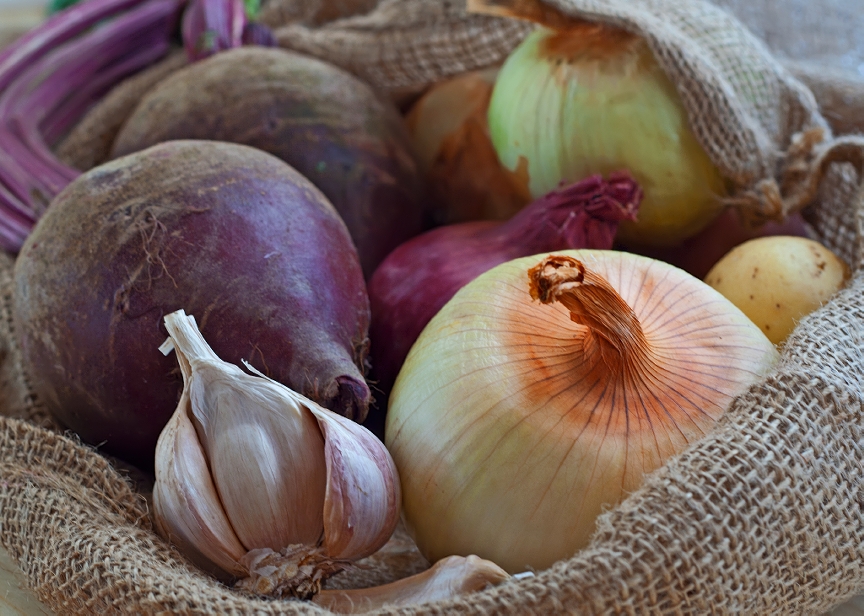


Sign-up for {N}power to get exclusive discounts, newsletters, members-only features, and more!

Fall is in the air and you’ve likely started bringing out the sweaters and scarves in your wardrobe to support your body during the transition. But have you started changing out your diet yet? Just like flip-flops and tank tops won’t cut it as we move through fall and into winter, neither will the cold breakfast smoothies and raw salads of summer. To truly support your body and cultivate wellness, take a cue from the natural world and use fall as a time to prepare your body for the upcoming winter.
As we shift from the carefree, relaxed days of summer to the more introspective and serious days of fall, we may find that nature is mimicked in our bodies: dry skin, crackly joints, shorter attention spans and colder extremities all match with the dry air, crackly leaves, shorter days and cold weather. Traditional medicine practices, such as Ayurveda and Chinese Medicine, strongly recommend that we shift our diets with the season as a way to stay healthy all year long. So, just as the trees prepare to survive the winter by pulling their energy from the leaves inward to the trunk and roots, so too should we be encouraging our energy to move inward to ground us. But unlike the trees, we can choose foods that help create this energy shift. Changing our diets in the fall, according to Traditional Chinese Medicine, helps to build the qi (pronounced ‘chi’) that bolsters our immune system and keeps us healthy through the winter. In addition to bringing our energy in, we also have an increased need to stay warm—in nature this means adding a layer of fat. While most of us would prefer not to do that, we can help to keep ourselves warm by eating warming foods and using cooking methods that are more warming.

This may all sound a little foreign to our Western way of thinking, but it is likely you naturally do some of these things anyway. Unpacking the winter clothes, craving more soups, stews and denser foods, and yearning to hole up with a good book are all things we’re inclined to do this time of year that support not only the energy shift but also help keep us warm. The whole process is made easier by the fact that the foods naturally abundant during the fall are precisely the foods that will help ground you, build your qi and warm your body. The challenge is learning to recognize those foods in the sea of fruits and vegetables likely available in your local produce section. In general, foods that are slow-growing and grow downward into the ground are good examples of fall- and winter-appropriate foods. Think of things like winter squash, beets, carrots, and other root veggies. If you’re unsure what foods are in season in your area during the fall, you can get specific information here and here. Eating more of the foods nature readily supplies for us in the fall is one of the easiest ways to help make a smoother transition to winter.
Besides supporting your body during the fall, these foods are also likely to taste better. This is because foods that are in season are generally harvested closer to their peak and shipped from somewhere nearby (versus the other side of the world where it is the opposite season). When a fruit or vegetable is picked at its peak ripeness, it tastes better because it was allowed to develop its full range of nutrients, and nutrients equal taste.[fn value=1][/fn] [fn value=2][/fn] An unfortunate side effect of our worldwide shipping of produce is that fruits and veggies must be picked before they are ripe so they can withstand the long journey. While this system allows us to have access to fresh strawberries and asparagus in the middle of winter, these foods are but a shell of their peak-season counterparts and are disappointing in taste and in nutrients. Not to mention, summer foods are naturally cooling and energetically expansive, both of which are perfect during the long hot days of summer, but opposite of the effects we’d like to cultivate in the winter.

In addition to choosing more seasonal fruits and veggies, how you prepare your meals is of equal importance. During the fall and winter, avoid too many raw and cold foods, which tend to encourage cooling and can weaken your qi and your digestive fire and lead to weakened immunity. Instead, favor slow-cooked soups and stews, casseroles, and pureed soups. Flavor your foods with lots of warming spices such as basil, cardamom, cinnamon, cumin, fennel, garlic, ginger, horseradish, mustard, onion, rosemary, saffron, sage and turmeric.
Changing with the seasons is an easy and natural way to help strengthen your body and prepare for the winter. It is also a simple way to help reconnect with nature. Besides, when we allow ourselves to slow down and tune in, it is likely how we’d want to eat anyway. The good book and warm clothes—those are just icing on the cake.



Sign-up for {N}power to get exclusive discounts, newsletters, members-only features, and more!